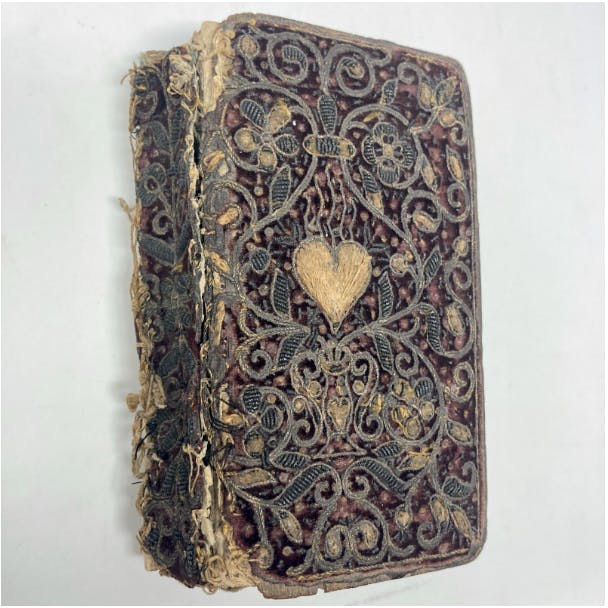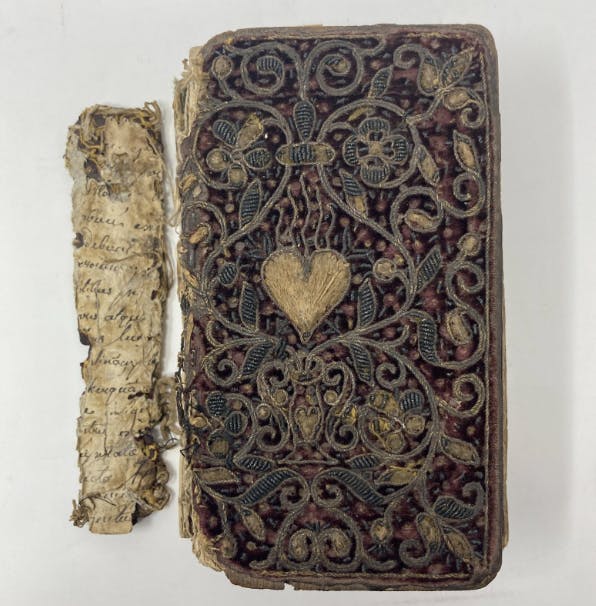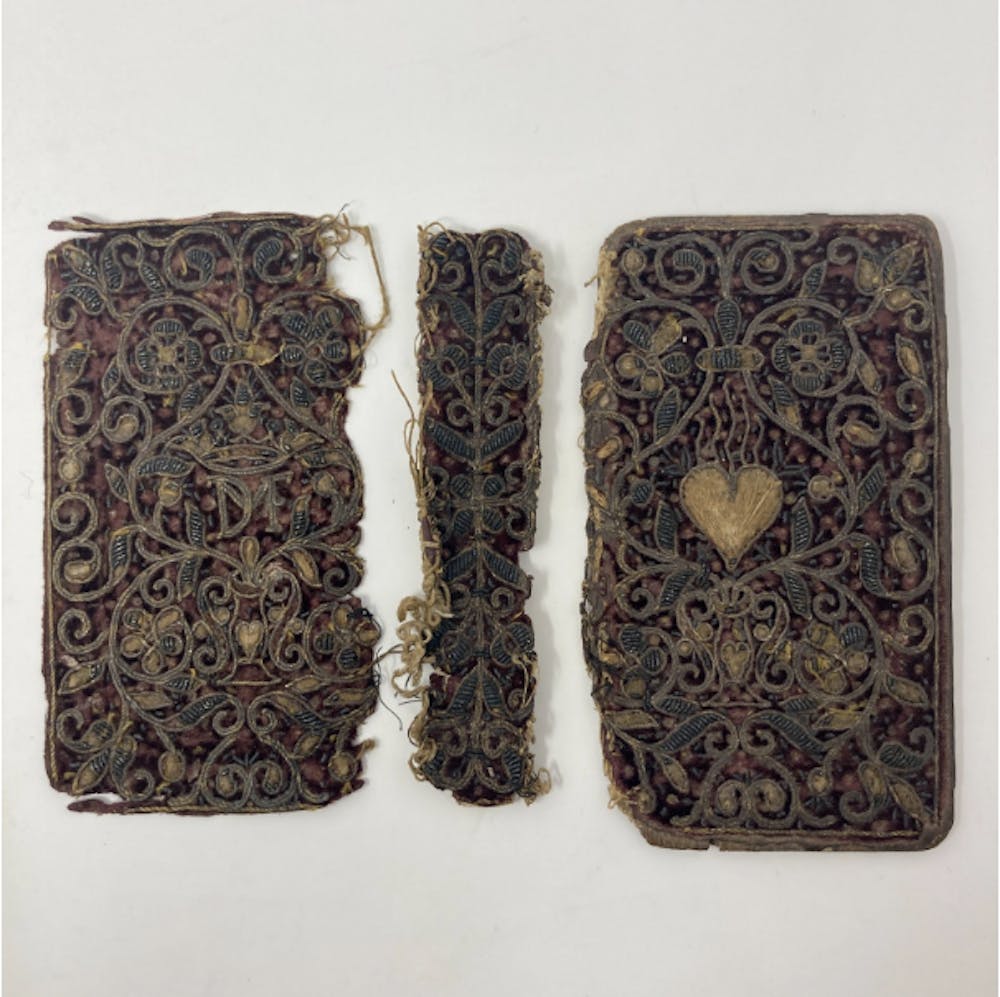Enveloped in deep maroon velvet, with ornate embroidery weaving floral patterns across the cover, spine and back, “Les Spirituelles Délices de L’Âme Pénitente en L’Amour Divin” is a pleasure to look at. This stunning book was published in Paris in 1608, and Middlebury received it as an anonymous gift in 1976. The book is a collection of Christian prayers and ordinances that famous poet and playwright Nicolas de Montreux, the author, considered particularly beautiful and moving.
While last week’s “From the Archives” column highlighted commercial expressions of love through vintage Valentine’s cards, this book focuses on another genre of love –– divine love. The book’s preface, an epistle written by de Montreux to Claude du Bellay of Notre Dame de Savigny, sets the tone for what follows in the rest of the book: advice on how to appeal to the divine and how to garner God’s love and affection. De Montreux’s epistle drips with effusive prose that relentlessly praises du Bellay’s sage religious insights and positions de Montreux as du Bellay’s lowly worshiper, in constant awe of his “Athena-like” wisdom.
Similar in content to countless other publications of the time, what makes “Les Spirituelles Délices de L’Âme” particularly interesting is the window into history that the tiny tome provides. Even before cracking open the book, clues abound. The fanciful velvet cover hints that whoever owned the book was quite wealthy. During the 17th century, books were usually sold without covers; depending on the owner’s financial situation, they could choose to add a number of personalizations to their new book. This particular cover, with its extravagant purple velvet and intricate embroidered heart, implies that the book was incredibly important to its owner. The heart suggests that perhaps it was a gift to a lover, a family member or a close friend. The initials DMF can be found on the back of the cover, another mystery amplifying the book’s allure.
While many may lament this book's poor condition, the lack of structural integrity provides opportunities to view the book in a new way. The spine, having completely detached from the book, exposes scrap paper that the bookmaker used when making “Les Spirituelles Délices de L’Âme.” Because paper was at a premium during this time, it was commonplace for bookmakers to use bits of used paper that were lying around when making new books. Although it is difficult to decipher any specific words, the scrap from the spine contains elegant cursive handwriting, probably the bookmaker’s. Similar to the spine, the velvet on the back cover has detached completely from the wood below. This detachment allows for the backside of the detailed embroidery to be seen, displaying every individual stitch. Seeing the painstaking work that went into creating such a gorgeous cover changes one’s perception of the book. Investigating “Les Spirituelles Délices de L’Âme” in this way transforms it from merely a book into a historical artifact, one that can tell volumes without ever being read.


Tulip Larson ‘25 (she/her) is an Arts & Culture Editor.
She also serves as an Arts & Culture writer, mainly writing for the "From the Archives" column that highlights an item from Middlebury's Special Collections each week. In her spare time, Tulip enjoys playing music in her on-campus band and exploring Vermont.
Tulip is an English major and and Art History minor.




